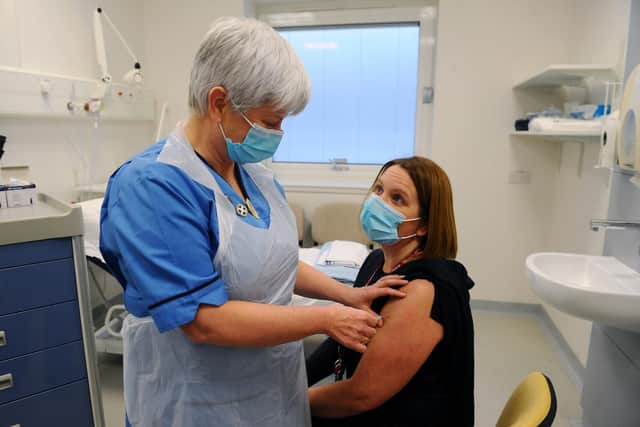NHS Scotland: One in four nurses report patients treated in 'inappropriate' settings
and live on Freeview channel 276
The survey data published by the Royal College for Nursing (RCN) showed 45 per cent of respondents in Scotland said necessary care had been left undone due to a lack of time.
And of those staff working in hospitals, 26 per cent of respondents reported clinical care taking place in inappropriate settings such as hospital corridors and waiting rooms rather than on wards.
Advertisement
Hide AdAdvertisement
Hide AdThat number soared to 63 per cent for nursing staff working in emergency care.


Colin Poolman, RCN Scotland interim director, said: “It’s scandalous that nursing staff have to treat patients in the corridors, waiting rooms and even in the back of ambulances outside of hospital entrances.
"This must not become a ‘new normal’ – it is putting patients at risk. Today’s emergency department statistics show that severe staffing shortages continue to have a serious impact on patient care.
“We’re in the situation largely because of the failure of Scottish Government to address the nursing workforce crisis, which has seen registered nurse vacancies reach a record high. Urgent action is needed to protect patient safety, address staff shortages and demonstrate that the nursing workforce is valued as a safety critical profession.”
Advertisement
Hide AdAdvertisement
Hide AdMore than 2,300 nursing staff from across Scotland’s health and care services responded to the RCN’s Last Shift Survey earlier this year.
One respondent to the RCN survey, an adult acute ward nurse, said patients and their relatives had complained about an extra bed being squeezed into a four-bedded bay, meaning they had “no buzzer, no curtains [and were not] not two-metre distanced”.
The results were published as there was a slight improvement in waiting times at Scotland’s emergency departments.
Data from Public Health Scotland, released on Tuesday, showed 8,180 attendees at A&E departments faced a wait of more than four hours in the week up to July 10.
Advertisement
Hide AdAdvertisement
Hide AdThis is down from last week’s report of 9,108 patients under the same measurement.
Some 24,603 people attended emergency departments across Scotland during the week the figures cover, meaning 66.8 per cent were seen and admitted, transferred or discharged within four hours.
A target set by the Scottish Government aims for 95 per cent of patients to be seen and subsequently discharged or admitted within this timeframe.
A further 2,566 patients spent more than eight hours waiting to be seen, while 909 attendees faced waits of more than 12 hours. It came as the Scottish Conservatives warned a “winter storm” could arise if standards in Scotland’s NHS did not improve in the next few months.
Advertisement
Hide AdAdvertisement
Hide AdDr Sandesh Gulhane, health spokesman for the Scottish Conservatives, has suggested the Scottish Government’s NHS Recovery Plan needs to be “urgently rewritten” before the winter months roll in.
But a Scottish Government spokesman said A&Es north of the border were the “best performing” in the UK and had been “outperforming those in England, Wales and Northern Ireland for over six years”.
“NHS planning for winter is under way across the service,” the spokesman said. “Building upon lessons identified from 2021/22, we are developing a cross-cutting programme of winter readiness to strengthen service resilience and enhance national contingency planning to support our NHS boards.”
Comment Guidelines
National World encourages reader discussion on our stories. User feedback, insights and back-and-forth exchanges add a rich layer of context to reporting. Please review our Community Guidelines before commenting.